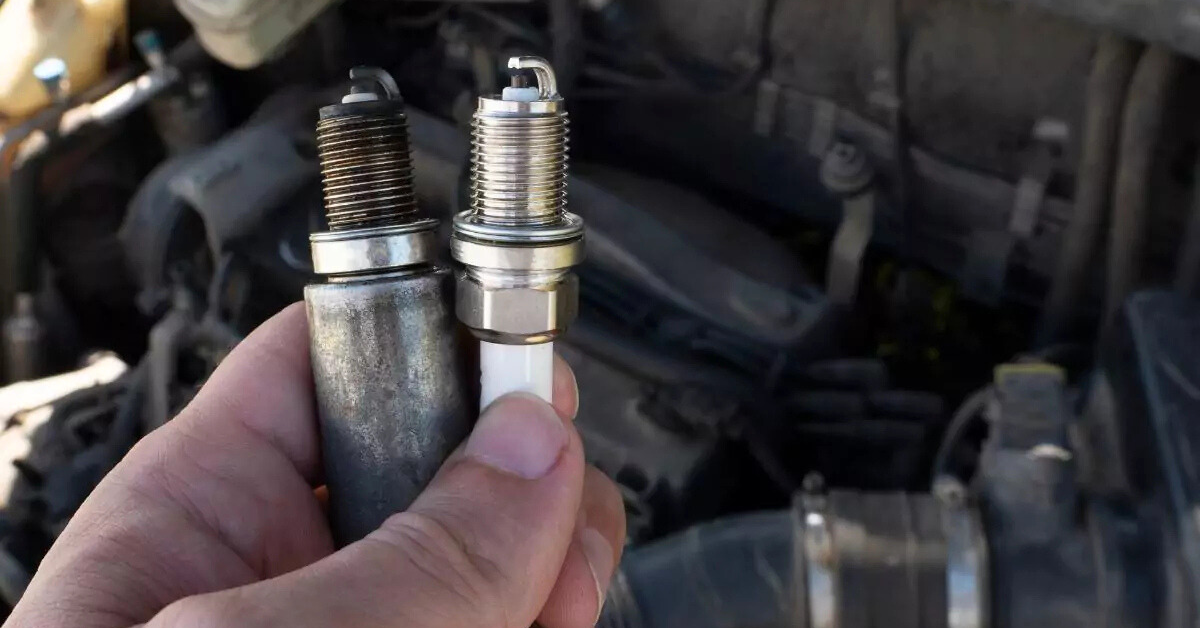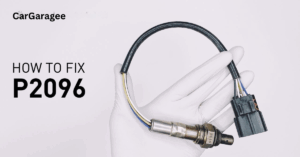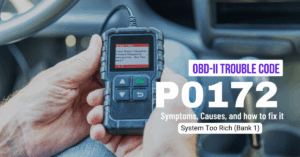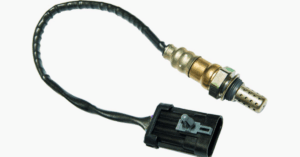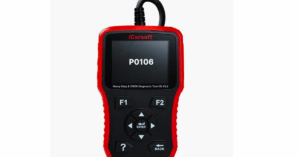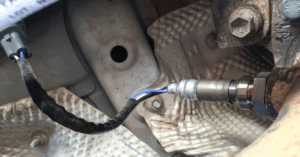When the check engine light activates and a scan reveals the P0304 code, it indicates a Cylinder 4 Misfire Detected. This type of misfire typically points to improper engine firing in one cylinder and can seriously affect the driving experience. Four-cylinder vehicles are especially prone to this issue if left unchecked. A faulty ignition coil is a common cause, and addressing it often restores normal engine function.
Many modern vehicles are equipped with a system that helps in diagnosing these problems. Still, finding the real underlying cause can be tricky without a proper device and a reliable guide. In my case, the vehicle had a bad ignition coil, a common problem behind misfires.
If you’re experiencing rough idling or see an illuminated warning light, take action. Diagnosing the issue may feel difficult, but fixing it immediately prevents larger issues. The system sets this code for a reason—you just need to understand what it’s saying. It’s not just a glitch; it’s your engine warning you before things get worse.
What Does the P0304 Code Mean?
In technical terms, the P0304 Diagnostic Trouble Code (DTC) refers to a Cylinder 4 Misfire Detected. The Powertrain Control Module (PCM) stores this fault after detecting enough misfire events in Cylinder 4. This code points to an issue in the engine’s combustion cycle, often due to an interrupted spark, poor fuel delivery, or a mechanical failure. As combustion weakens, power transfer through the crankshaft reduces, affecting overall vehicle performance.
What are the Possible Causes of the P0304 Code?
Experiencing a P0304 code can be frustrating, especially when your vehicle seems fine one moment and misfires the next. Understanding the possible causes behind this code is the first step toward a reliable fix. Here’s what might be going wrong under the hood:
- Faulty Ignition Components
Misfires in cylinder 4 often come from worn spark plugs, failed coil packs, or a coil-on-plug issue. These parts are responsible for igniting the air-fuel mix at the right time. When they malfunction, combustion becomes unstable or fails entirely. - Bad Spark Plug Wires or Connections
Images are for illustrative purpose only; credits belong to 4Runner Forum.
In vehicles with plug wires, a bad spark plug wire or loose connections in the wiring circuit can interrupt voltage delivery. Even a small gap or fray can reduce spark strength, especially under engine load. This results in irregular or no firing in the affected cylinder. - Fuel Injector Problems
A faulty fuel injector, whether dirty, leaking, or stuck ON, can lead to uneven fuel spray. This causes incomplete combustion in cylinder 4, especially if the fuel delivery timing is off. It’s a common issue in high-mileage engines. - Incorrect Fuel Pressure
If fuel pressure is too low or too high, the injector may not operate as designed. Low pressure starves the cylinder, while high pressure floods it. Both conditions disturb the combustion balance and trigger a misfire code like P0304. - Mechanical Engine Issues
Worn-out parts such as a damaged piston, leaking valve, cylinder wall scoring, or a worn piston ring can lower compression. Without proper compression, the fuel-air explosion is weak or absent, resulting in performance loss and cylinder-specific misfires. - Camshaft or Lifter Damage
Images are for illustrative purpose only; credits belong to Charger Forums
A worn camshaft lobe or a damaged lifter disrupts valve movement. If valves don’t open or close at the right time, combustion can’t occur properly. This is a subtle but serious cause behind persistent misfires. - Leaking Head Gasket
A leaking head gasket allows coolant or oil to seep into the combustion chamber. This contamination dilutes the air-fuel mixture and weakens the burn, often affecting one cylinder at a time, like cylinder 4 in a P0304 case. - Vacuum Hose or Intake Leaks
Cracked vacuum hoses, PCV hoses, or a leaking intake system allow unmetered air into the engine. This leans out the mixture and throws off timing, causing one cylinder to misfire while others continue working fine. - Dirty or Malfunctioning Sensors
Sensors like the mass air flow meter or engine coolant temperature sensor regulate vital engine functions. When they become dirty or malfunction, they send incorrect data to the ECM, which may mismanage ignition and fuel delivery. - Wiring and Electrical Faults
Images are for illustrative purpose only; credits belong to Reddit.
An open or short in the engine wire harness, damaged wires, or a corroded distributor cap contact can cut off spark or fuel. This often results in sudden, unexplained misfires that are hard to trace without diagnostic tools. - Variable Valve Timing Malfunction
A malfunctioning variable valve timing system, often due to dirty oil or a clogged filter, can delay or advance valve operation incorrectly. The result is poor combustion efficiency, which might only affect specific cylinders. - Faulty Powertrain or Engine Control Module
Failures in the powertrain control module (PCM) or the Engine Control Module (ECM) can affect signal transmission to coils and injectors. Even if other parts are functional, the misfire may persist if the injector driver inside the module is damaged.
Symptoms Of The P0304 Error Code
If your car isn’t running quite right, and you’re wondering whether it’s more than just a rough day on the road, these key symptoms could be your warning signs that the P0304 code is active:
- The check engine light may be turned on, either flashing or permanently illuminated, serving as the first alert of a P0304 fault code.
- Rough engine idling, shaking, or erratic idle often follows, as the engine begins to misfire in cylinder 4.
- The vehicle may show difficulty starting, experience stalling, or exhibit extended cranking during ignition.
- Diminished power, especially when driving uphill, and stumbling under acceleration indicate worsening combustion issues.
- A failed emissions test, excessive fuel consumption, reduced gas mileage, and poor performance are common performance-related symptoms.
- Unusual fuel odor, foul exhaust smell, or strange-smelling emissions may be present, often caused by a real problem or a faulty sensor.
- An OBD-II scanner can check for trouble codes and confirm active error codes like P0304, helping determine if parts need to be replaced.
How to Diagnose the P0304 Code
The P0304 error should never be ignored, as it signals a cylinder 4 misfire that may stem from several potential causes. To diagnose it correctly, begin with an OBD-II scanner to confirm the code and any related codes. A thorough visual inspection of the ignition system—including spark plugs, ignition coils, and wiring—can reveal signs of damage or wear. Next, perform a compression test to check compression in the affected cylinder and verify engine health.

Don’t forget to check the fuel system, especially the fuel injectors and fuel pressure, for delivery issues. If the cause remains unclear, a leakdown test can uncover deeper internal engine issues. While a skilled DIY auto repair enthusiast with the right experience and skills may handle the diagnosis process, it’s often safer to take the vehicle to a professional automotive technician. Informative videos can also help guide each step.
How to Fix the P0304 Code
To begin resolving the P0304 error, scan your vehicle using an OBD-II or On-Board Diagnostic scanning tool to verify the code is still active. This helps confirm any related trouble codes before starting the diagnosis. For accuracy, refer to your owner’s manual to understand your specific make and model. Identifying the root cause early helps avoid unnecessary work and speeds up the repair.
Some common and documented fixes include replacing faulty parts like a spark plug, ignition coil, or fuel injector, especially on models like the 2008 Ford F-150 XL 4.2L or the 2014 Dodge Durango Limited 3.6L. In more severe cases, the solution could involve swapping out the offending cylinder. Performing a power balance test or a detailed inspection of the coil packs can reveal combustion issues. These remedies are essential in determining how to apply the right approach.
For those with solid DIY skills, trusted auto repair resources, step-by-step guides, or tools like an ALLDATA single-vehicle subscription can help. If the underlying issue remains unclear, problems like a blocked Positive Crankcase Ventilation (PCV) valve—which affects air flow to the engine—may be the reason. When the PCV valve is clogged or stuck open, it can easily trigger a misfire. If unsure, consult an automotive expert to prevent future issues.
P0304 on Some Ford Vehicles
- Air Leaks in the Air Induction System
Leaks in the Air Induction system, especially at the intake manifold, can cause an imbalance in the air-fuel mixture. This disrupts combustion and may lead to misfires in Cylinder 4. These leaks are often due to worn gaskets or loose connections. - Fuel Delivery Problem
Images are for illustrative purpose only; credits belong to Sparky’s Answers. A contaminated, dirty, or sticking fuel injector can restrict proper fuel flow. When Cylinder 4 doesn’t receive enough fuel, it misfires and triggers the P0304 code. Cleaning or replacing the injector may resolve the issue.
- Driving with Low Fuel
Operating the vehicle with less than 1/8 of a tank can lead to fuel starvation. This causes inconsistent fuel pressure, especially under load, which can make Cylinder 4 misfire. Always maintain adequate fuel levels to prevent this. - Base Engine Mechanical Problem
Mechanical faults affecting only Cylinder 4—such as worn piston rings, damaged valves, or compression loss—can lead to poor combustion. These issues usually require deeper inspection of the engine internals. - Air Leaks in the EGR System
Images are for illustrative purpose only; credits belong to
Underhood Service.
Cracks or disconnections in the EGR hoses or a failing valve can cause incorrect exhaust gas flow. This impacts air-fuel balance and may cause a misfire in a specific cylinder, like Cylinder 4. - Air Leaks in the PCV System
Leaks in the PCV system, especially in related hoses or the valve, can lead to vacuum loss. That loss disrupts engine idle and fuel mixture, increasing the chances of a targeted misfire like the one indicated in P0304
How Much Does It Cost to Fix?
The P0304 error is often fixed by replacing a spark plug or coil, and the expected cost to resolve the issue usually falls between $100 and $300, based on your vehicle’s model and location. According to RepairPal estimates, an ignition coil may cost anywhere from $200 to $300, while PCV valve replacements generally range from $50 to $110. Although the car can still be driven, it may be tempting to ignore the warning. However, prolonged operation without repair can result in severe engine damage. It’s important to identify the failing component early. Below is a simple cost estimate to help guide your decisions:
Cost Breakdown Table
| Part Type | Estimated Price Range |
| Basic Spark Plug | Around $2 up to $100 |
| Engine Ignition Coil | Typically $100 to $300 |
| PCV Valve Replacement | Usually falls between $15 and $50 |
Why Ignoring P0304 Can Cost You More
Many drivers delay fixing the P0304 error because the vehicle still runs, but this short-term choice often leads to long-term damage. A continuous misfire in cylinder 4 can overwork other components, degrade the engine, and even damage the catalytic converter, which is expensive to replace. Fixing the root cause early is always more cost-effective than waiting for a breakdown. Prevention not only saves money but also protects your engine’s health.
FAQS
How to fix error code P0304?
Check and replace the spark plug, ignition coil, or fuel injector for cylinder 4. Diagnose the root cause with an OBD-II scanner and fix any mechanical or fuel-related issues.
What causes a cylinder 4 to misfire?
Common causes include worn spark plugs, faulty ignition coils, clogged fuel injectors, vacuum leaks, low compression, or internal engine damage.
Can a bad O2 sensor cause a cylinder 4 misfire?
Yes, a faulty O2 sensor can send incorrect air-fuel ratio data to the ECU, which may lead to misfiring in one or more cylinders, including cylinder 4.
Is it bad to drive with code P0304?
Yes, prolonged driving with a cylinder 4 misfire can cause severe engine damage and harm the catalytic converter. It’s best to fix it promptly.

Mian Hashir is a passionate automotive enthusiast and the lead author at Car Garagee, a website dedicated to providing in-depth car reviews, maintenance tips, and the latest news in the automotive world. With years of experience in the industry, Hashir combines his technical knowledge with a love for cars to deliver insightful and engaging content. Whether you’re a car owner or a curious reader, Mian Hashir’s articles help readers make informed decisions, from choosing the right vehicle to understanding how to keep it in top condition.

